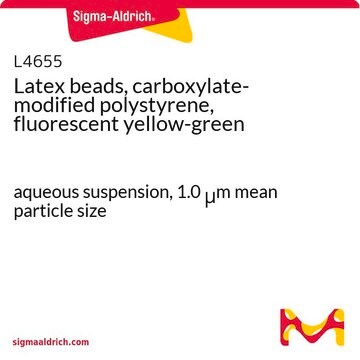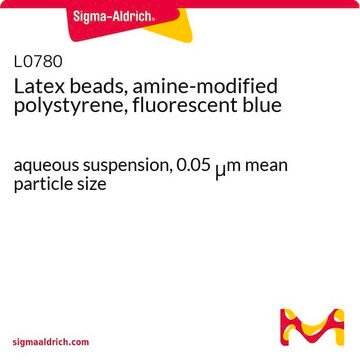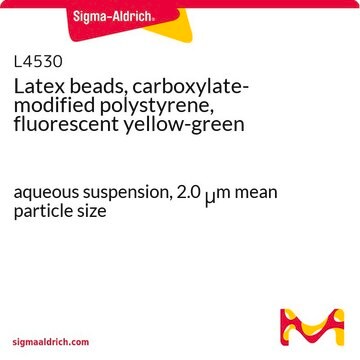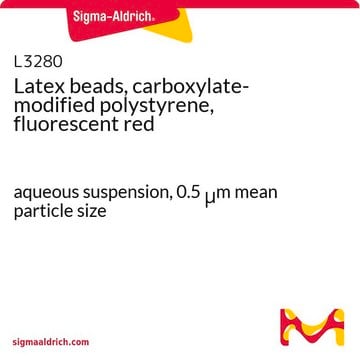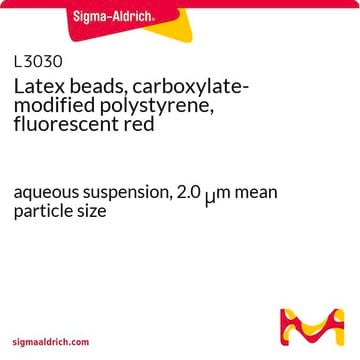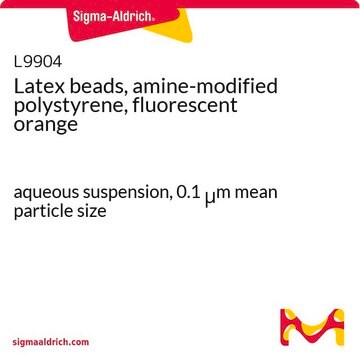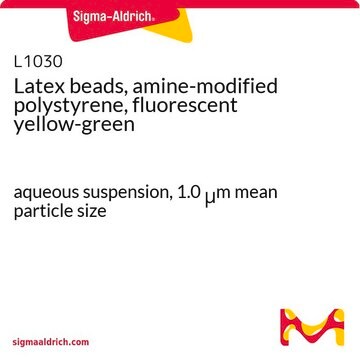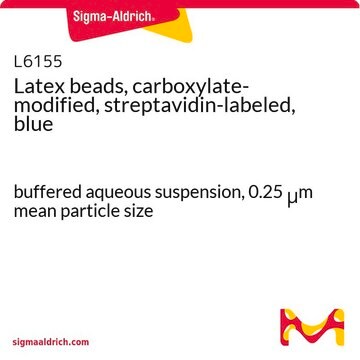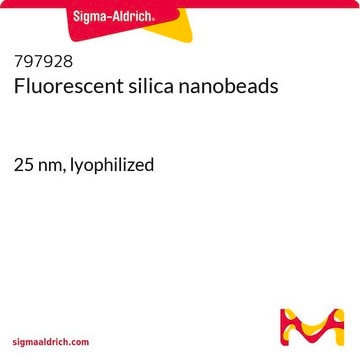This product has a solid content (bead content) of 2.5% (w/w). The product density is reported on a lot specific basis with a range of 1.04 - 1.06 g/mL. The bead number can be calculated and then diluted according to the required number. The formula for determining the number of beads in the samples is: Bead number = (6.03 x 10^10) x (percent solids) / 3.30 x (bead diameter).
L5155
Latex beads, carboxylate-modified polystyrene, fluorescent yellow-green
aqueous suspension, 0.03 μm mean particle size
Sinonimo/i:
Fluorescent latex beads
Scegli un formato
Scegli un formato
About This Item
Prodotti consigliati
Stato
aqueous suspension
Composizione
Solids, 2.5%
tecniche
cell based assay: suitable
Dimens. media particelle
0.03 μm
Fluorescenza
λex ~470 nm; λem ~505 nm
applicazioni
cell analysis
Cerchi prodotti simili? Visita Guida al confronto tra prodotti
Applicazioni
Codice della classe di stoccaggio
10 - Combustible liquids
Classe di pericolosità dell'acqua (WGK)
WGK 3
Punto d’infiammabilità (°F)
Not applicable
Punto d’infiammabilità (°C)
Not applicable
Scegli una delle versioni più recenti:
Certificati d'analisi (COA)
Non trovi la versione di tuo interesse?
Se hai bisogno di una versione specifica, puoi cercare il certificato tramite il numero di lotto.
Possiedi già questo prodotto?
I documenti relativi ai prodotti acquistati recentemente sono disponibili nell’Archivio dei documenti.
I clienti hanno visto anche
-
What is the concentration of product L5155?
1 risposta-
Utile?
-
Filtri attivi
Il team dei nostri ricercatori vanta grande esperienza in tutte le aree della ricerca quali Life Science, scienza dei materiali, sintesi chimica, cromatografia, discipline analitiche, ecc..
Contatta l'Assistenza Tecnica.